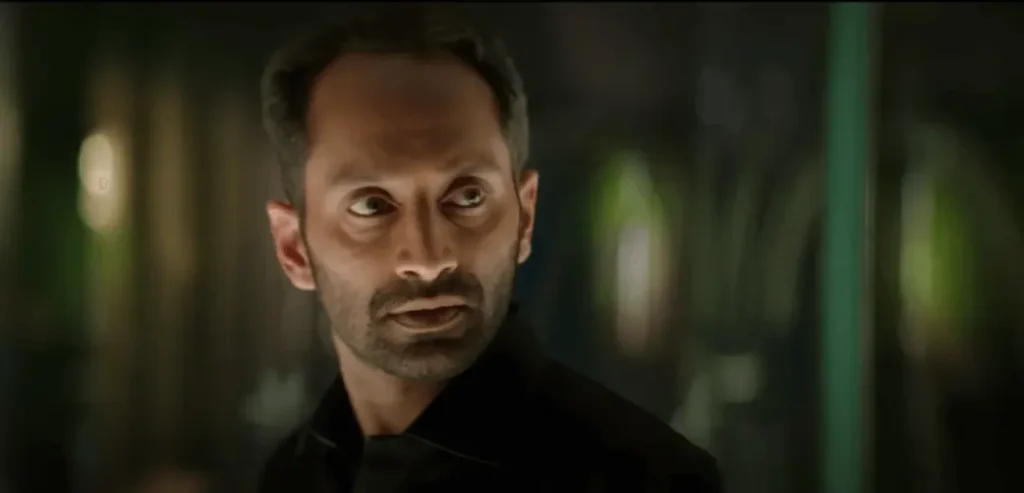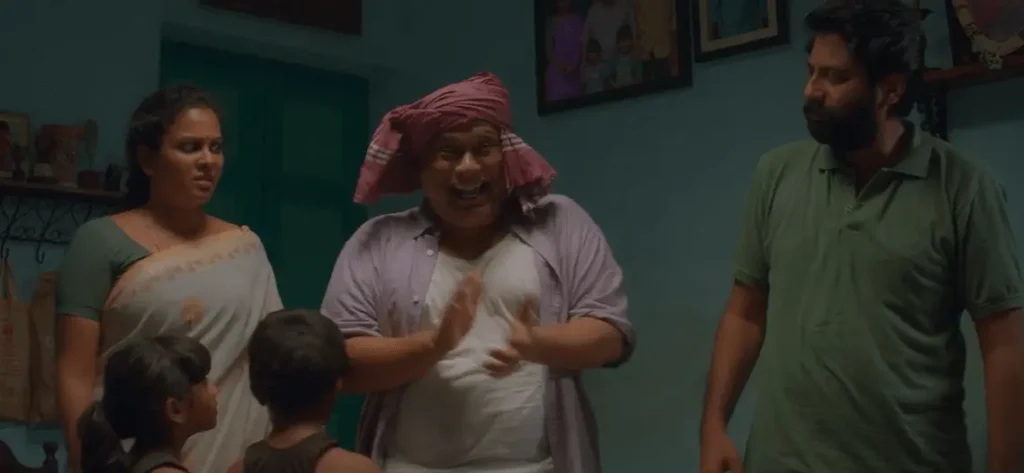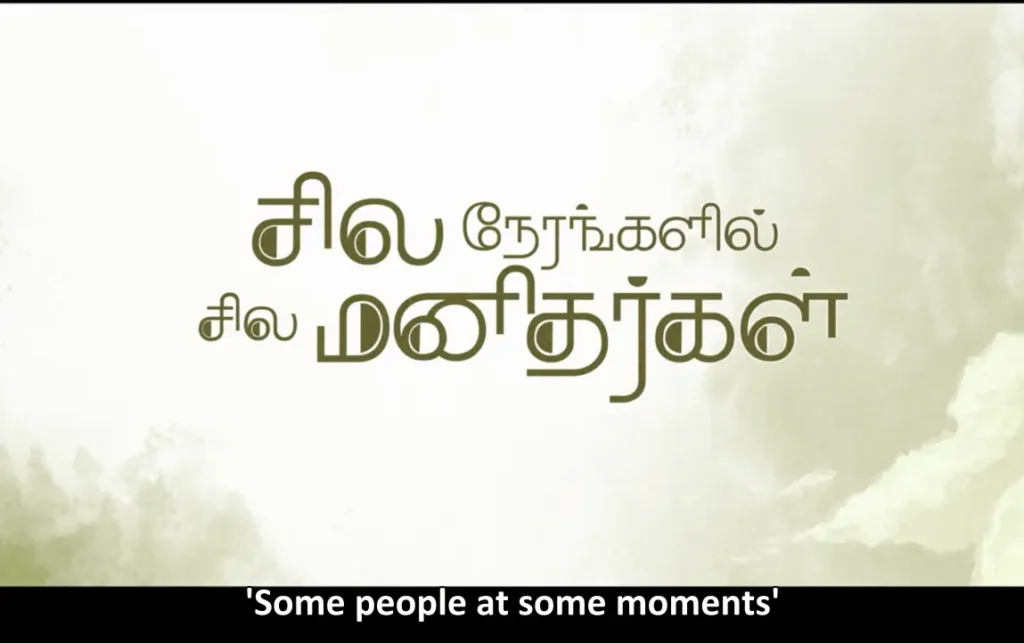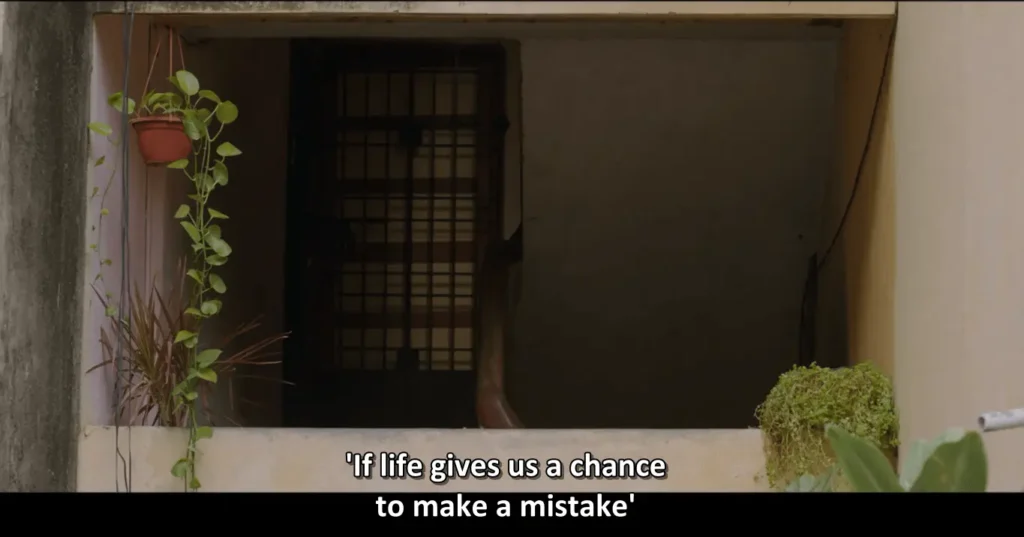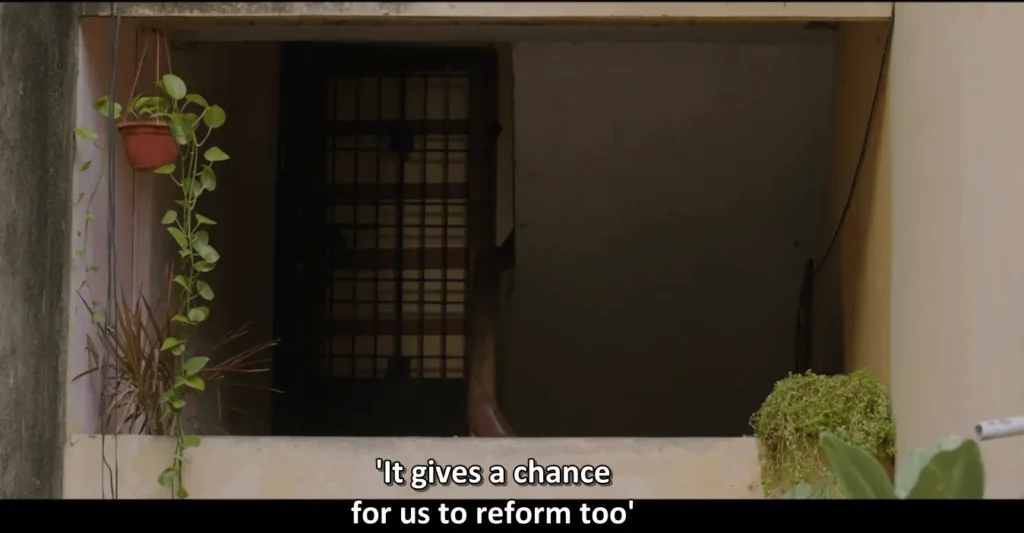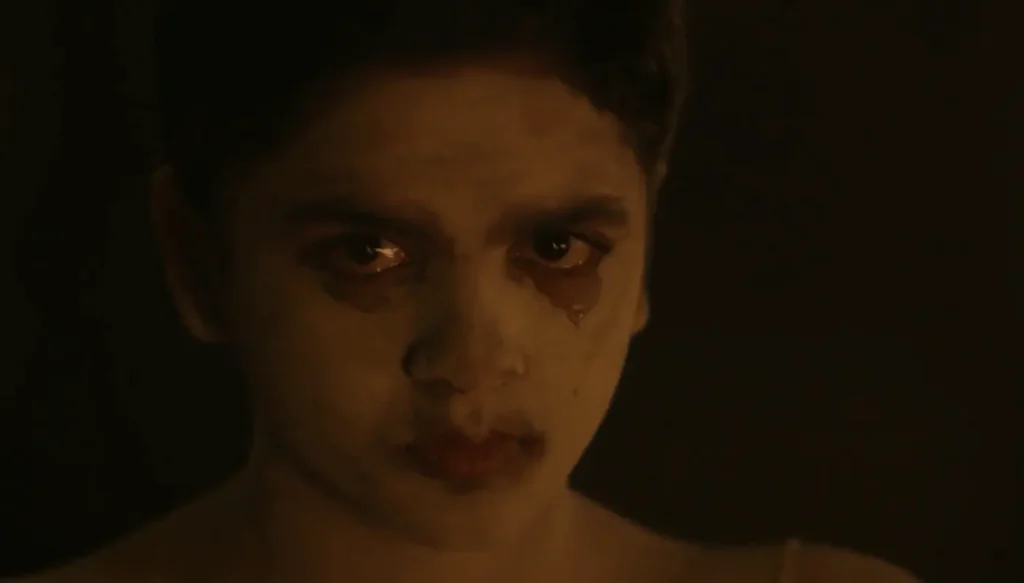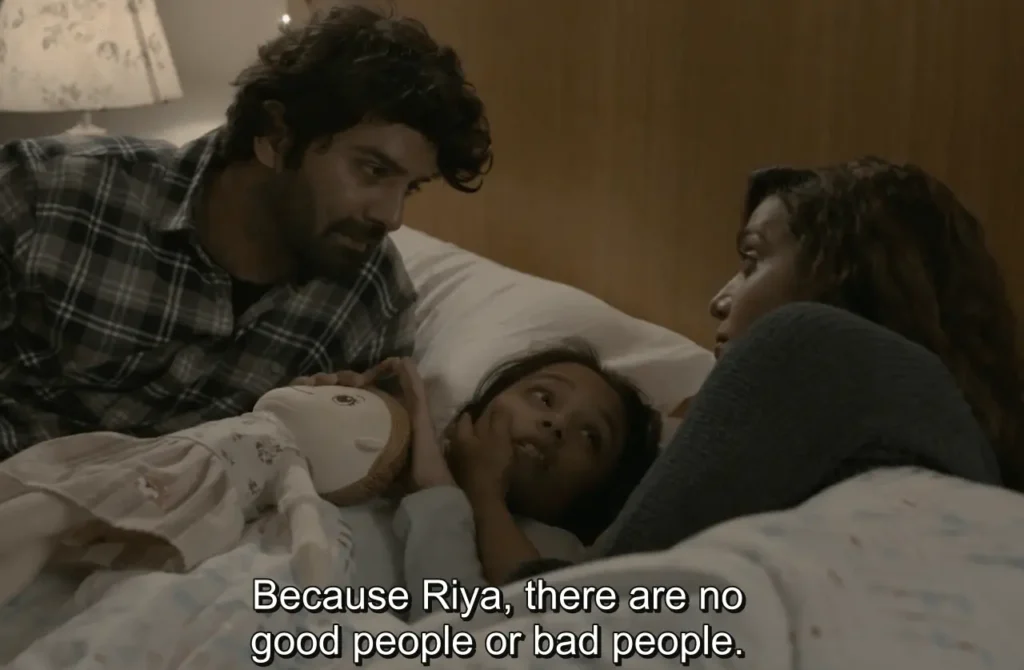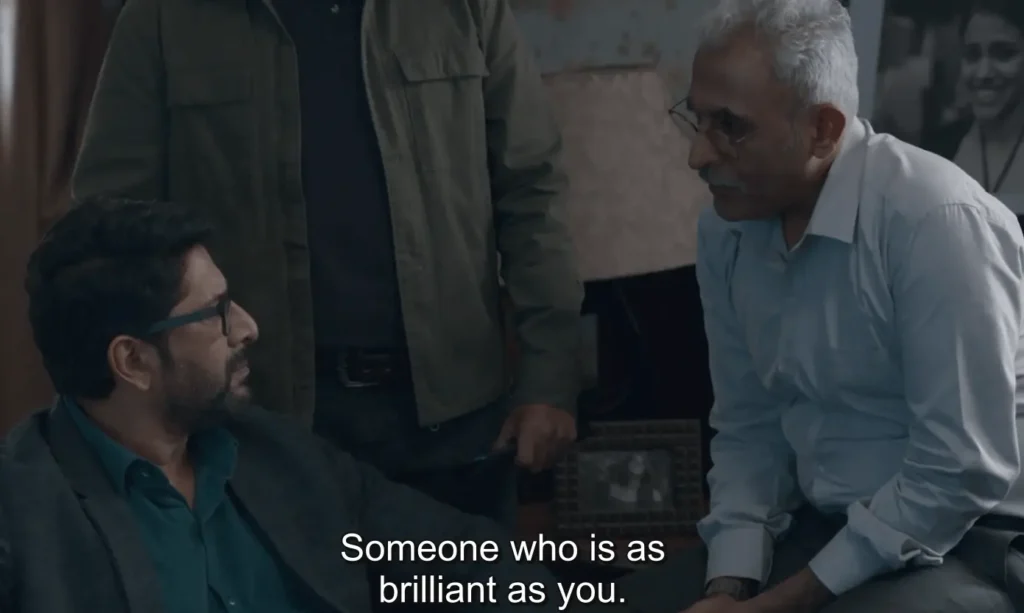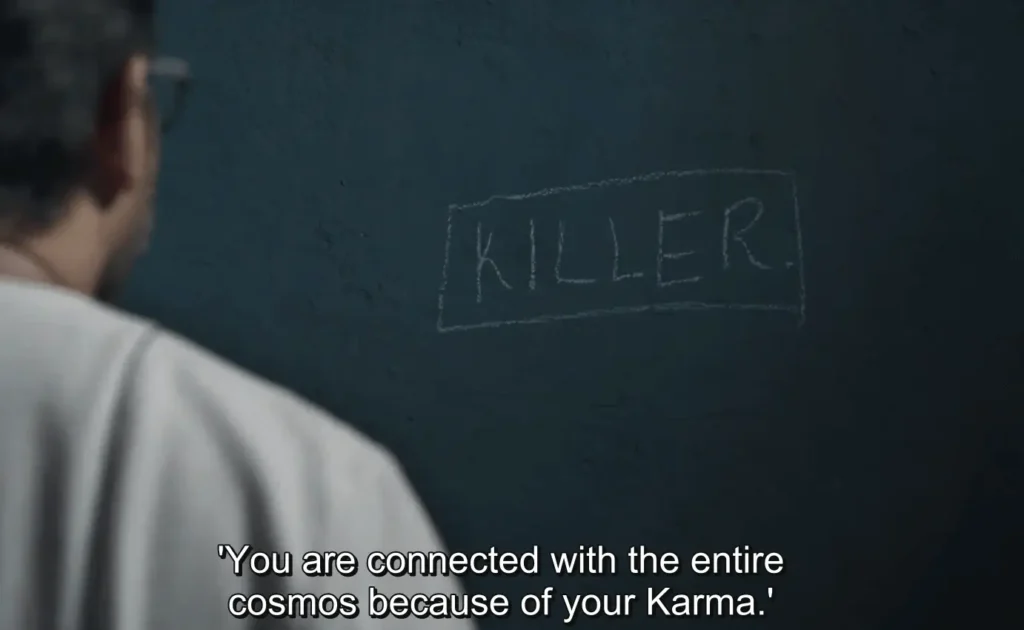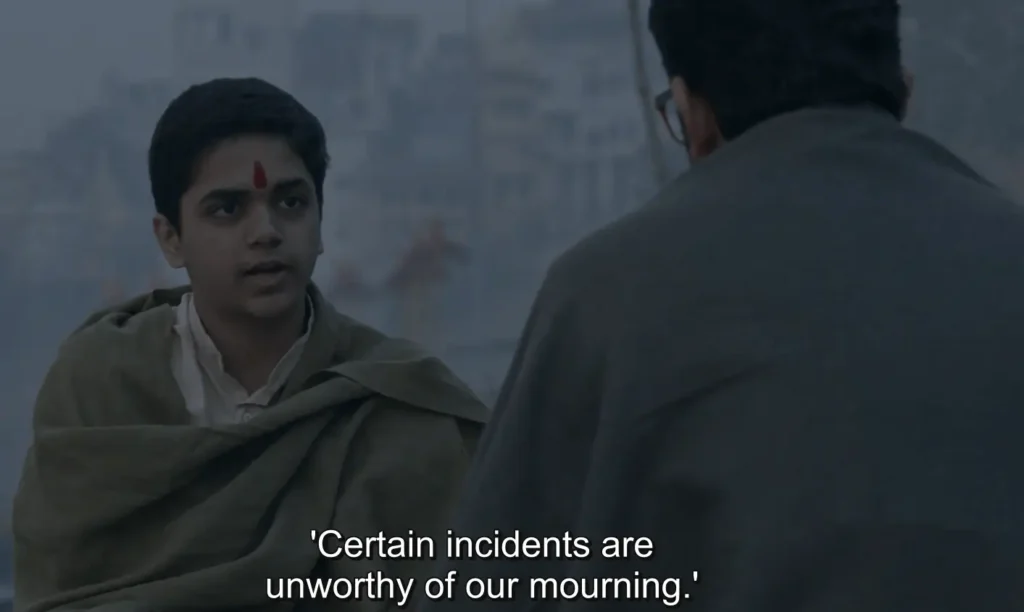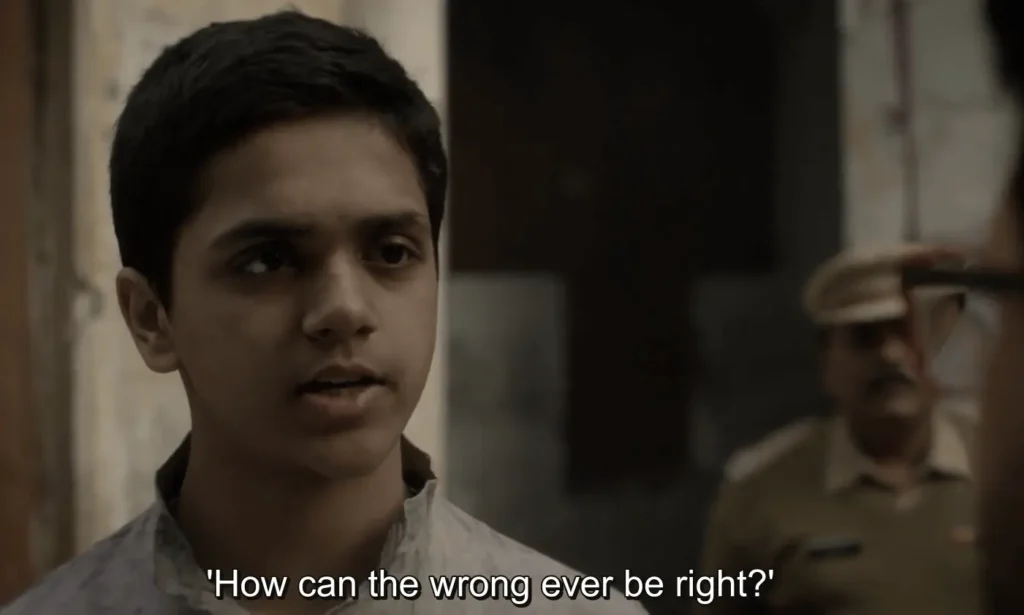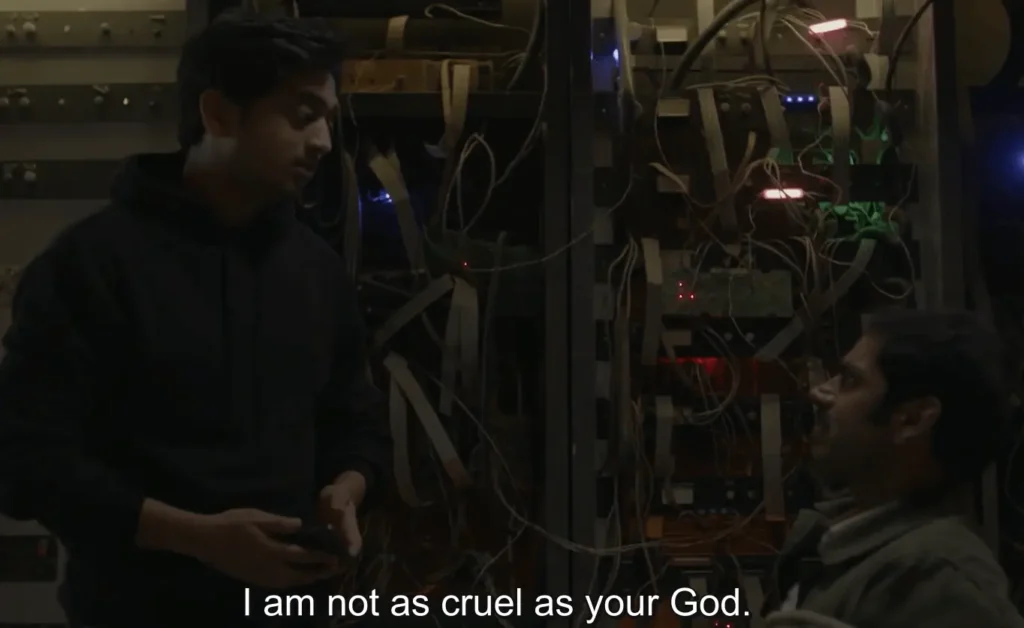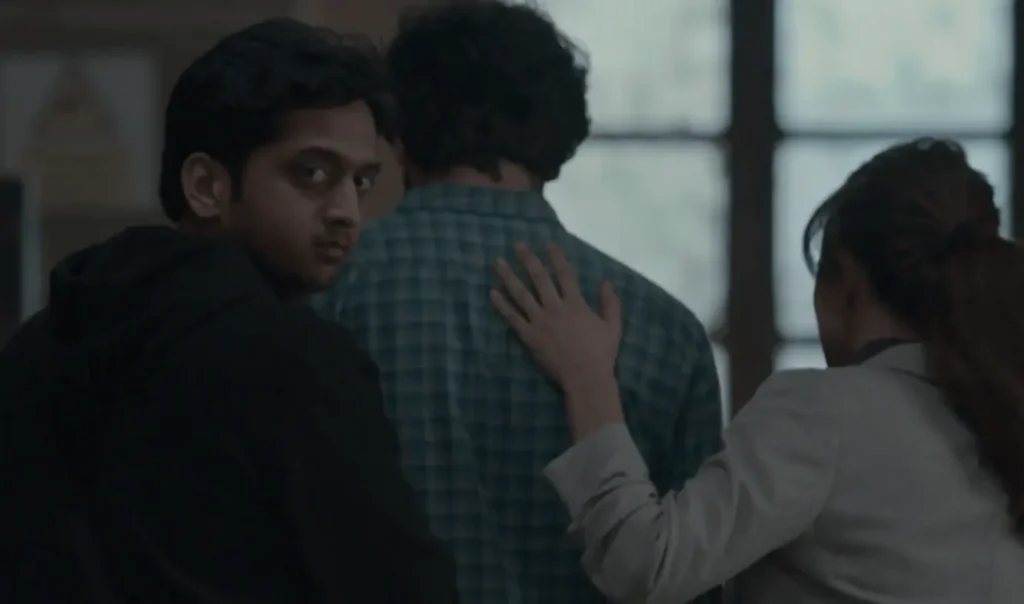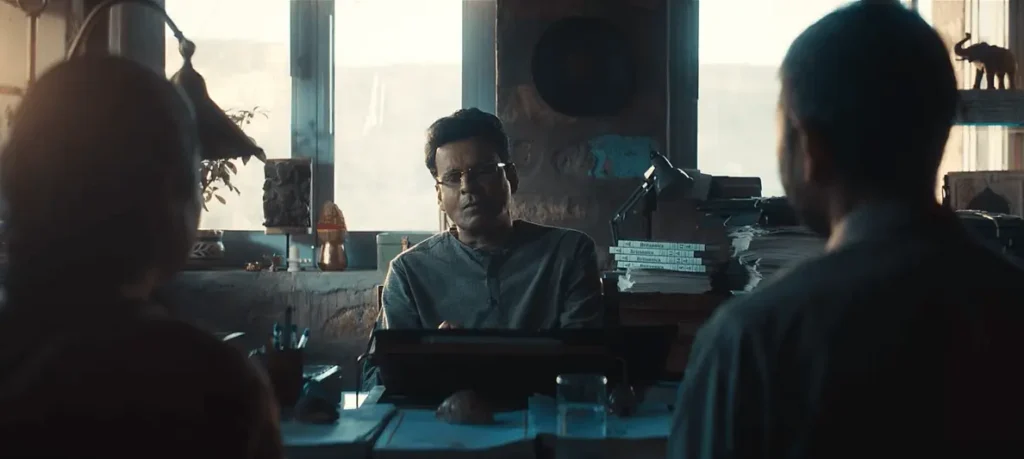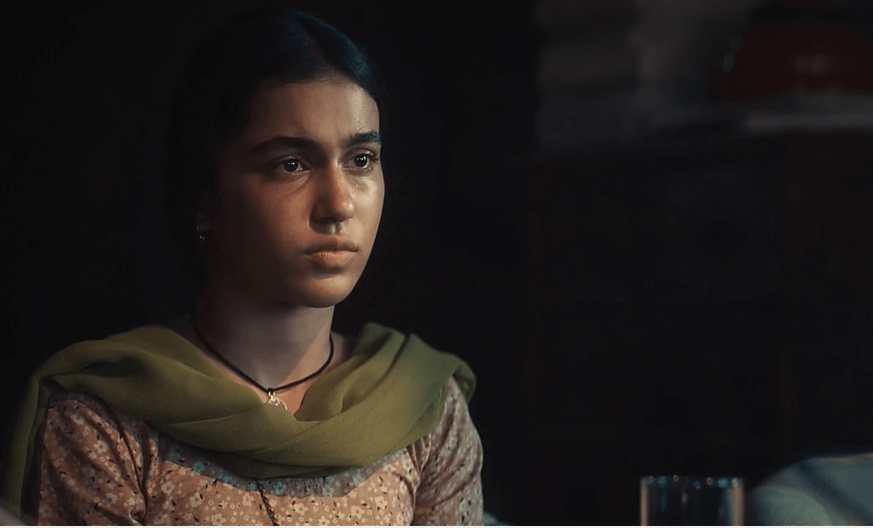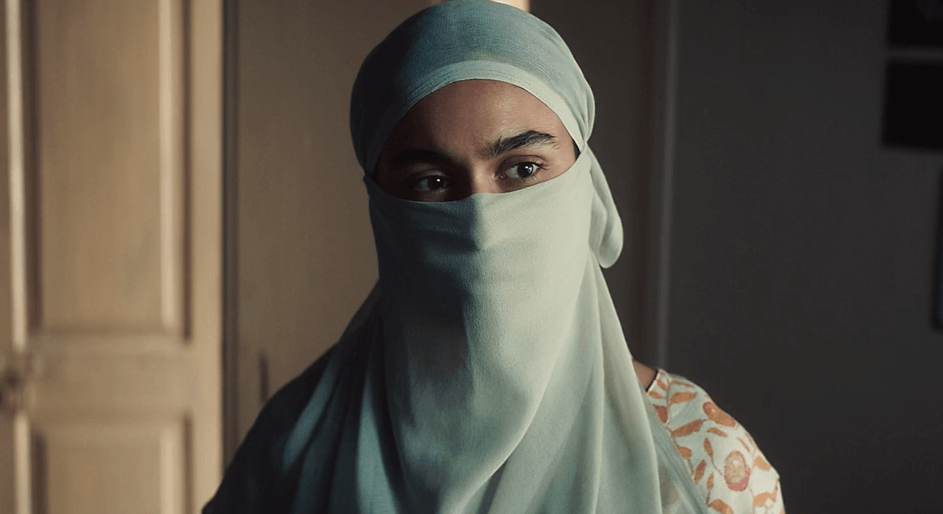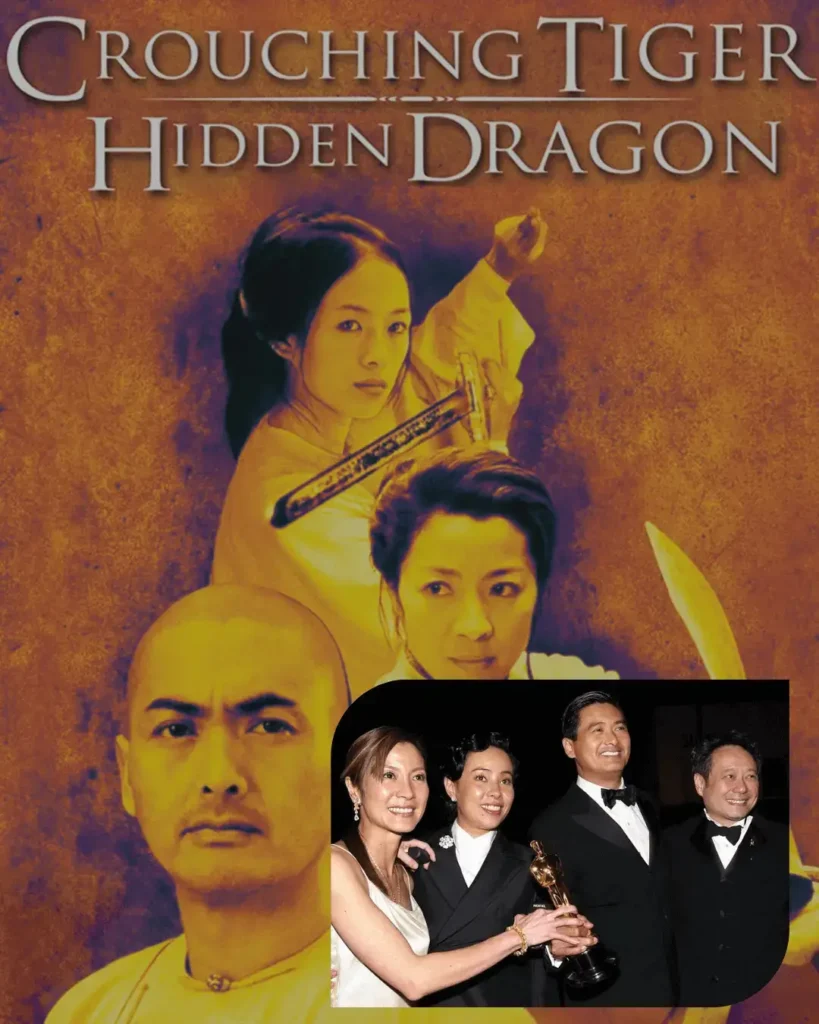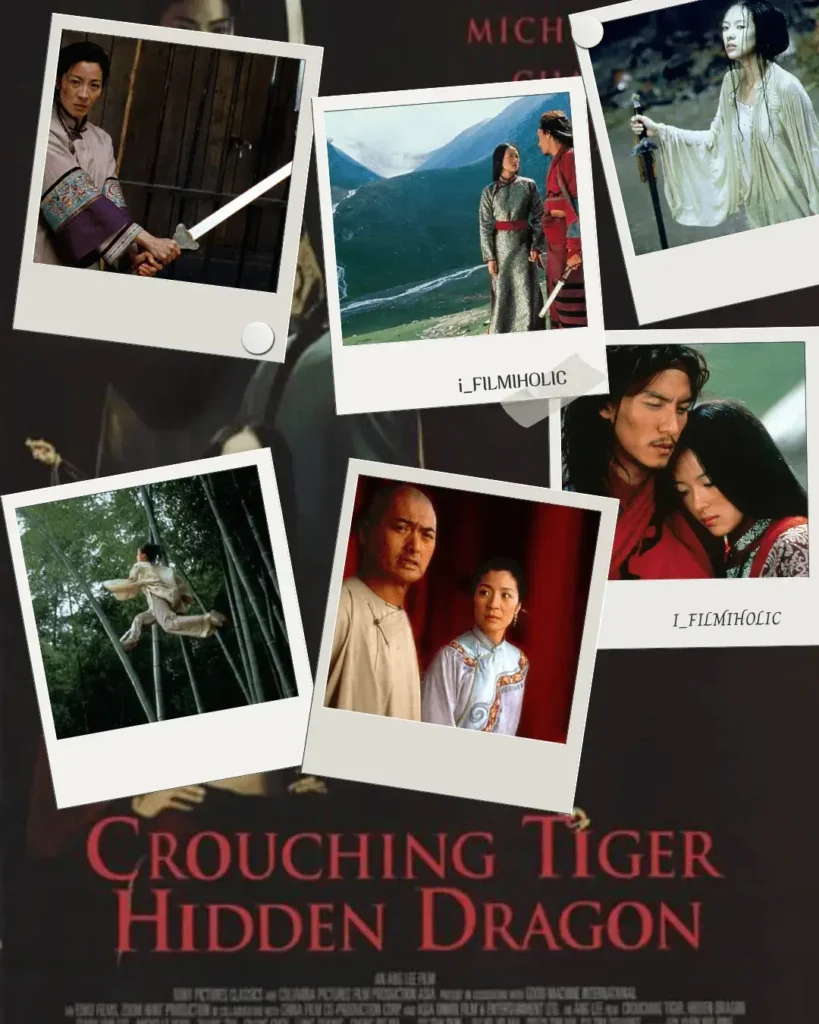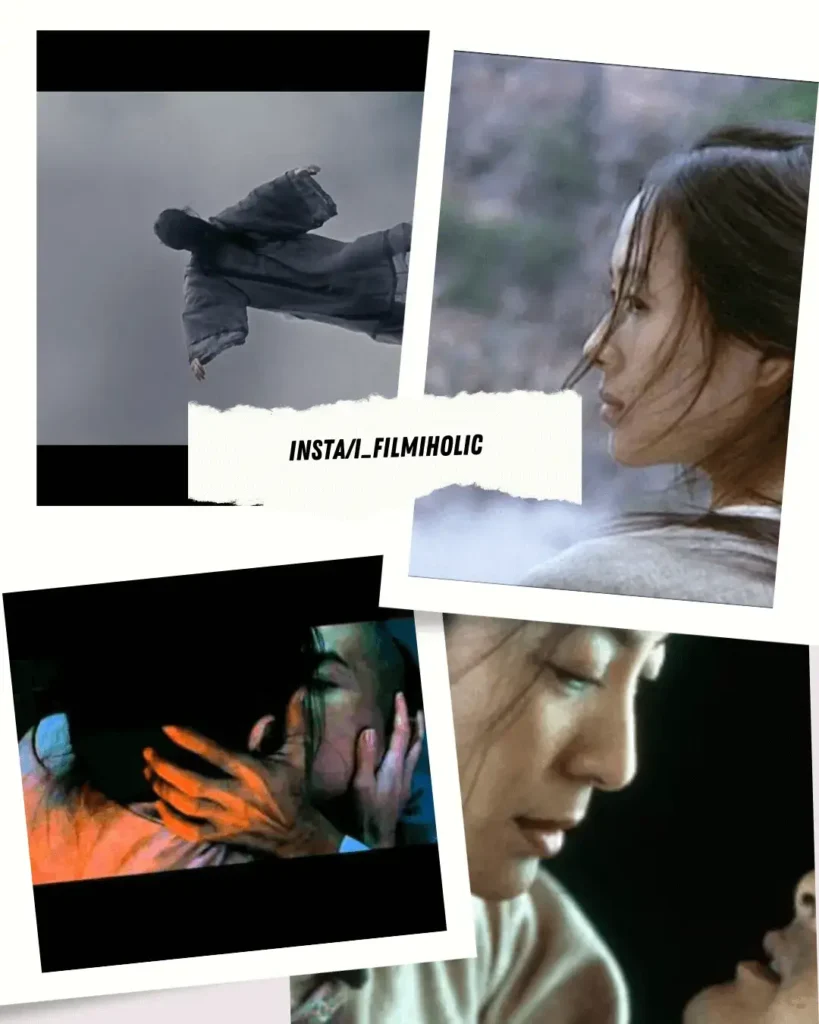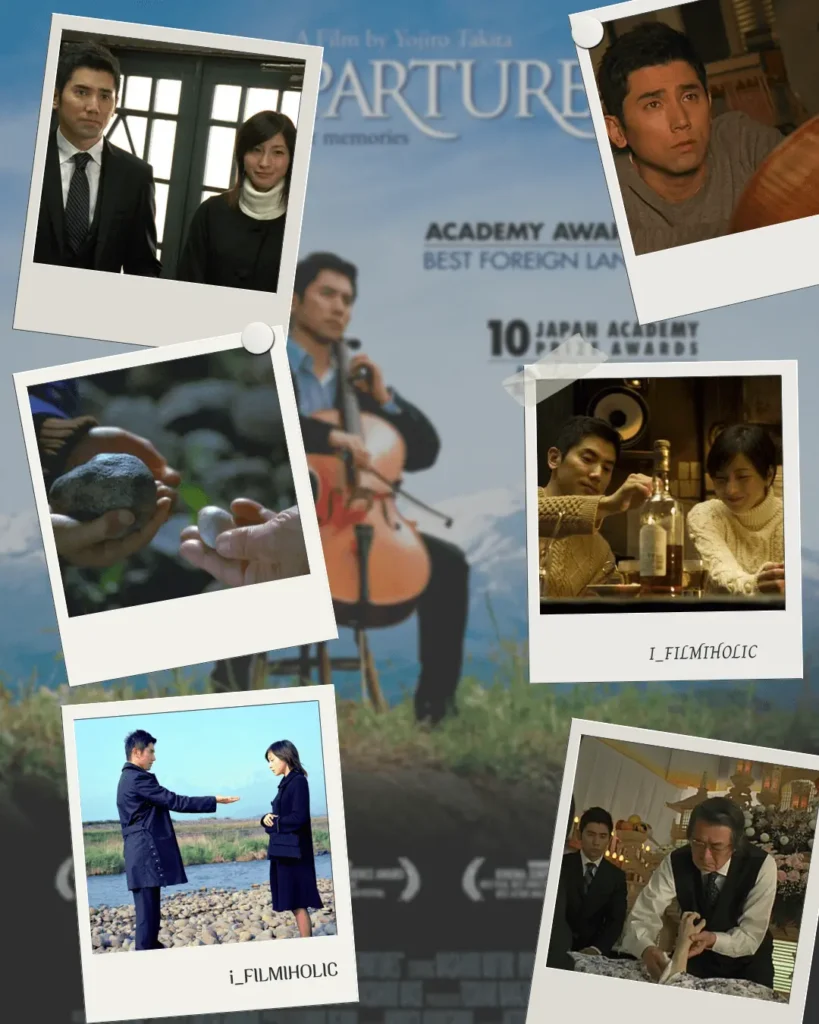Sandeep Reddy Vanga’s Animal is streaming on Netflix with 3 hours and 24 minutes of adrenaline pumps. This is not a review, but rather an analysis of the propaganda art and politics of Animal. So, this blog contains spoilers, and if you haven’t watched it yet, skip this.
After Arjun Reddy (2017) and Kabir Singh (2019), two films about a sexually desperate misogynistic doctor with anger issues and Preeti obsession, director Sandeep Reddy Vanga returns with Animal. This time, it’s about a toxic patriarchal chain-smoking engineer obsessed with his father.

The crux of the story is a son protecting his father from animals in an animal park. Despite the script being imbued with his palaeolithic view of human instincts, Sandeep Reddy Vanga managed to infuse it with high adrenaline action, music, and a bloodbath. In essence, the hero is a carnivorous animal in human form, devoid of sin, vision, or empathy, driven only by instincts.
I thoroughly enjoyed the film, although I disagree with a few of Sandeep Reddy Vanga’s perspectives. This film is a commendable mass entertainer.
How Sandeep Ignites the Adrenaline Rush With Animal
Sandeep Reddy Vanga brilliantly incorporates elements that have recently succeeded in commercial movies. Bringing in a weapon dealer, adding a massive gunfight scene, and retro songs like Roja, Punjabi DJ songs & Jamal Jamaloo, created high moments in theatres and on Instagram as well.
The cold-blooded revenge arc, fatherly sentiments, and nationalism (the weapons are made in India scenes) are well-placed. Surprises, such as the bystander-turned-traitor twists and the double climax, the 2-hour (so-called) street fight in the end (a reminiscent of Thallumala) the list is long. The high-adrenaline music is another highlight. Kudos to the long list of music directors from Harshavardhan Rameshwar, Jaani, Vishal Mishra, Shreyas Puranik, Manan Bhardwaj to last but not least: A. R. Rahman.
Forgot to add, the climax scene, inspired by Rolex, is particularly notable. Fans of Leo, Jawan, Pathan, and Arjun Reddy will find Animal a high-adrenaline theatre experience.
Animal’s Anthropology Class & Thrills from the Start
The movie begins with a narration, swiftly moving to a school episode of Ranvijay (Ranbir Kapoor) showcasing his love for his father. One of my favourite scenes follows, filled with A.R. Rahman’s Roja background score, where Ranvijay is now a college boy. The film transitions seamlessly to love at first sight.
Sandeep Reddy Vanga acts like an anthropologist, sharing perspectives on the evolution of poetry. These insights could be used to promote a whey protein brand or a fitness centre. He then progresses Ranvijay’s character arc to highlight his prejudiced and narcissistic nature.
Sandeep Reddy & His Art of Crafting a Predatory Protagonist
Sandeep Reddy Vanga meticulously wrote this character. Ranvijay cries only once in the entire movie. He never shows his vulnerabilities; even when he informs his sister about her husband’s death, he immediately consoles her by suggesting a remarriage. He consoles his wife by stating that happiness is a choice, and there’s a scene where he enjoys biryani made from human flesh (though Sandeep Reddy Vanga doesn’t explicitly show this). With all these elements, Sandeep tells you how umpathetic Ranjvijay is.
I appreciate Sandeep Reddy Vanga’s meticulous crafting of dialogues for Ranbir Kapoor. Ranbir’s dialogues always reflect an animal mindset, like his comments on business expansion or his various lectures. When Ranbir talks about patience and his fights with schoolmates, it reminds me of predators on Animal Planet. Sandeep Reddy Vanga’s portrayal of his hero as a tiger is contrasted with a more dog-like loyalty, treating others as subservient. Sandeep Reddy Vanga has a knack for highlighting character flaws, like Ranvijay’s.
The Subservient Female Roles in Animal Explained
Sandeep Reddy Vanga doesn’t give much importance to female characters like Geethanali, Zoya, or even Reet. They are portrayed as subservient to their male counterparts. Geethanali’s quick fall in love with Ranvijay, perhaps influenced by watching Arjun Reddy, is an example of this. Similarly, Zoya is depicted as submissive to Ranbir’s character. What is most disturbing is that Zoya is even ready to lick his feet for his love.

Unfortunately, Sandeep Reddy Vanga’s skill seems solely invested in building the character of Ranvijay. When it comes to the character arc, it only moves in one direction, continually ascending. I believe actions should have consequences, but nothing Ranvijay does in Animal seems to have any.
Sandeep’s Reply for Concerns Around Sexuality, Violence, and Gender Equality
Sandeep Reddy Vanga also tries to counter criticisms of male chauvinism. He addresses consent by having Ranvijay touch Geethanali’s feet and give a lecture on the importance of women in the Paleolithic era.

If there’s a problem with him slapping her, this time let her slap him. If there are issues with domination and masculinity, let her come to his home, kiss him in front of everyone, and let him praise her physique. He addresses body shaming by giving a spiritual lesson on pubic hair.
If there’s a problem with adult content and gory scenes, let’s have a three-hour blood bath with nudity and discussions of sexual fantasies.
What I really like is the idea of recording the moanings of their first lovemaking and using it to calm his angry wife, that was truly a wow! what an idea moment 🙂 .
So, in simple words, this movie entertains the majority with ease. I was expecting a Tarantino style but got an ultra-mode RGV style. Raw violence, sex, and obsession await you in this movie, sprinkled with a few good father-son sentiments.
The climax scene, with two sons fighting for their father’s honour and love, battling with emotions, and a background song echoing their family connection, made the whole theatre dark and silent without any mobile screen light or murmurs. That’s the power of bringing raw emotions to the screen.
From Ranbir to Tripti Dimri: Explaining Performances from Animal
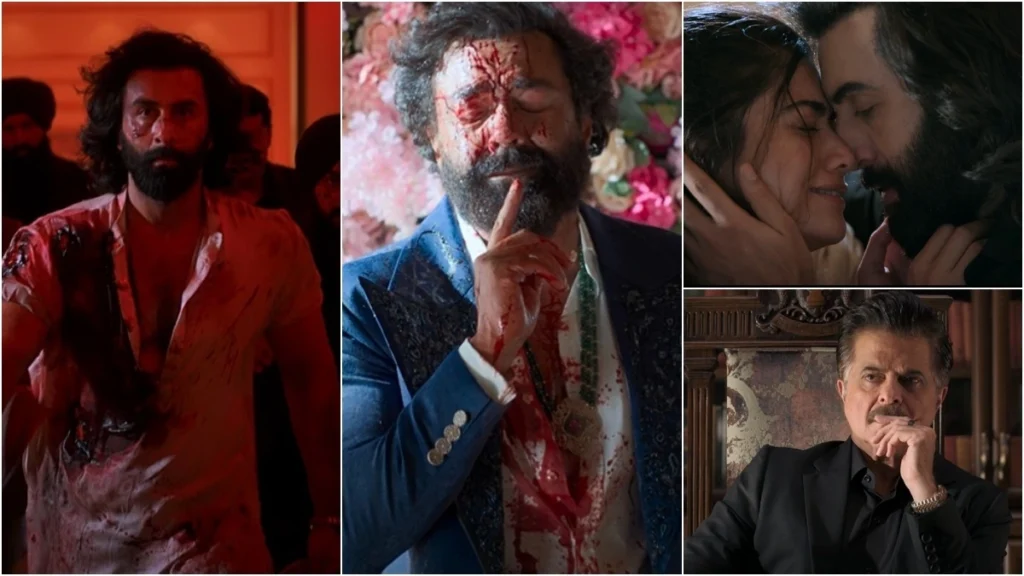
Regarding performances, Ranbir Kapoor establishes himself as a superstar with Animal. Sandeep Reddy Vanga did justice to Bobby Deol fans, though I expected more from Bobby Deol. My surprise was Tripti Dimri, whose screen presence was mind-blowing despite limited screen time. Charu Singh and Anil Kapoor did their parts as Ranbir’s parents with ease. Saurabh Sachdeva delivered a killing performance as Bobby Deol’s brother, especially in the climax. Rashmika gave a decent performance, possibly her best since Kirik Party
Why is it Animal ? Animal Explained
Let me explain my views on why the film is called Animal by Sandeep Reddy.
The film explores the more primal, instinctual aspects of human nature, as shown in how Ranbir celebrates his heart surgery and how Abrar releases his pain of loss. In Sandeep Reddy Vanga’s Animal park, the lead male characters operate based on the pleasure principle, seeking immediate gratification. The climax fight is reminiscent of the survival of the fittest theory, living in a world where the law of nature prevails.
In this movie, after Papa, SWASTIK is the most highlighted word. It’s their family business, indicating a blend of traditional values and a darker quest for power (Nazi approach).
The tagline of Swastik, “Power, Progress & Victory”, is repeated by Ranvijay during his oath of vengeance. As per psychologist Carl Jung’s concept of the shadow, this tagline could be seen as manifestations of Ranvijay’s shadow, where his animalistic traits (aggression, dominance, the pursuit of power) are embraced and externalised as his personal and corporate ethos.
Animal & Sandeep Reddy Vanga’s Propaganda Art
Regarding opinions, my friend argued,
“How conveniently do we forget that Scorsese used slow-motion and rousing soundtracks for despicable characters in ‘Goodfellas’ and ‘Casino’, and when Sandeep Reddy Vanga does an extreme Indian version of that, it’s suddenly ‘glorification’?”

As a die-hard fan of Scorses, I feel Martin Scorsese never portrayed Travis Bickle or Jimmy Conway as heroes, nor did he justify their actions. His characters dealt with consequences, unlike in Sandeep Reddy Vanga’s Ranvijay. This is where Sandeep Reddy Vanga falls short as a responsible artist. I believe he is obsessed with certain ideologies and celebrates and promotes them through his movies. Scorsese’s Raging Bull highlighted male insecurity in 1980. Can we expect such a film from Sandeep Reddy Vanga?
Toxic masculinity is a propaganda tool for promoting patriarchal beliefs. Ranvijay’s words to his sister about killing any of her choices he dislikes, and his actions as a school kid stepping in with a gun to protect his sister, and delivering a lecture to his father suggest a patriarchal mindset. That’s where he fails to responsibly handle his craft.
Read about the Yadhoom philosophy & Sriram Raghavan’s Merry chritmas here.

